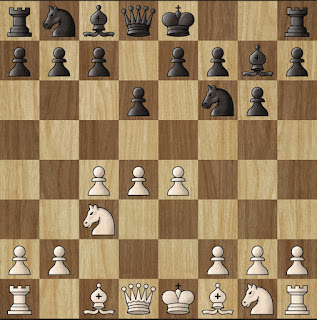Why Play the King's Indian Defense
Be a better chess player by playing the King’s Indian Defense. The King's
Indian Defense ("KID") is described as a hypermodern opening. It
simply means that Black allows White to build a pawn structure in the center.
In chess, the control of the center is an important strategy. Whoever controls
the center has the positional advantage. This positional advantage can be used
to slowly gain more space with the primary objective of winning the game. In
most chess openings, the center is not surrendered without intense struggle or
adequate compensation. The center of the board is a very valuable real estate
that needs to be conquered and protected. Ironically however in KID, White
allows Black to conquer the center without difficulty. Black seems to be
content in creating a haven for the King after a fianchetto.
The KID, at first impression, appears to be a passive opening for Black. In reality, however, the KID is a very aggressive type of opening that is a favourite of known attacking players such as Mikhail Tal and Bobby Fischer. The KID was used by Fischer in his famous game known as "The Game of the Century". Tal employed the KID in several games where he demonstrated his magical ability on the chessboard. The KID is an opening that is full of surprises and imaginative combinations can ensue. There is no limit in tactics and combinations when you play the King's Indian Defense. The only limit is your creativity and imagination when you play the KID.
Why play the KID? This KID is a very good and sound defence against White's "d4", "Nf3" and other openings except "e4". In the "e4" or "Pawn to King's 4" opening, the Sicilian Defense is considered to be the "fighting" reply. But when your opponent pushes the Queen's pawn to "d4", the KID provides an initial statement that you are ready to fight and win the game. The KID is not passive as it is thought to be. The initial impression of peacefully surrendering the center of the board is actually in preparation for a complicated struggle on the kingside. Black will attempt to fight this intrusion on the center by different tactical manoeuvres.
The KID is an opening with the study of any beginner in chess. The KID gives the essential lesson in defence and counter-attack. Even the more advanced chess player will benefit greatly from studying the theories behind the King's Indian Defense. One of the theories that are tested in the KID is the " overextended pawn structure" and the "occupation of the center squares". If you play the KID, you will learn to handle a situation where White's pawn has been "over-extended" to occupy the center. To properly handle this situation, Mikhail Tal's games are very instructive.
Chess is a game that is easy to learn but very difficult to master. It is a game that requires study and concentration. To have a strong foundation in chess, it is necessary to know the underlying theories behind a particular opening. The KID is an opening that gives a beginner player an understanding of chess and how to handle positions that arise after several moves in the opening. If you have strong fundamentals about the KID, you can easily transition to more complex openings in chess.
If you study the games of Mikhail Tal and Bobby Fischer, you will be inspired to play the KID. Their games using the KID against very notable opponents often shows deep combinations and tactics. It is almost magical how Tal and Fischer handle the chess pieces when attacking a KID opening. Recall that when Fischer was 13 years old the used the KID to demonstrate that White's center can be challenged as long as the pieces work in harmony.
Thus, to gain strong fundamentals in chess and to further improve your attack and defence abilities, it is worth the time to study the King's Indian Defense.



Comments